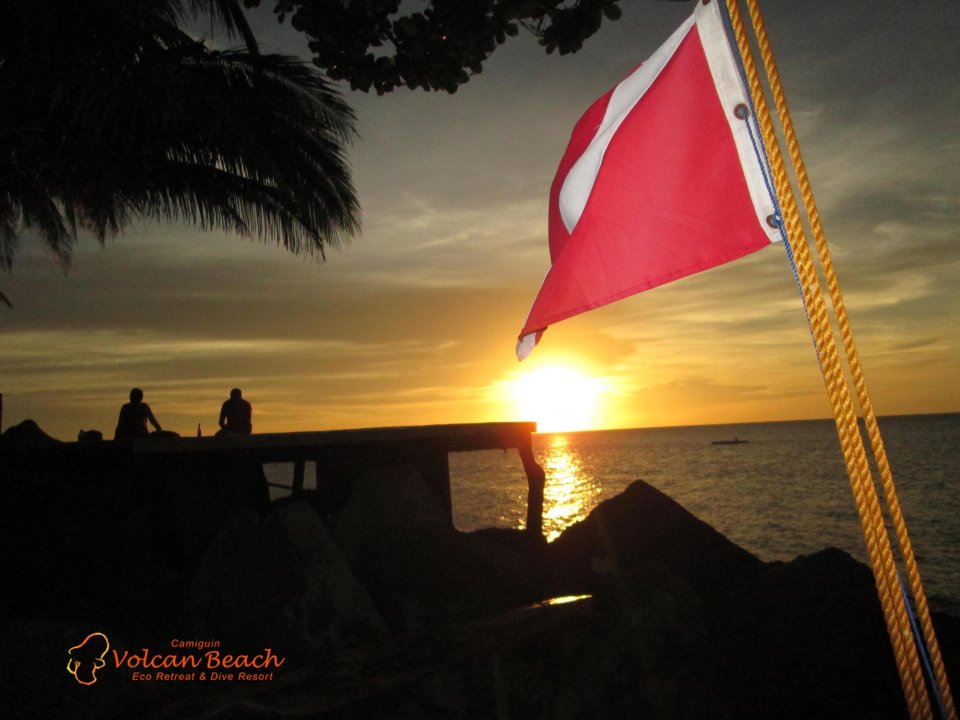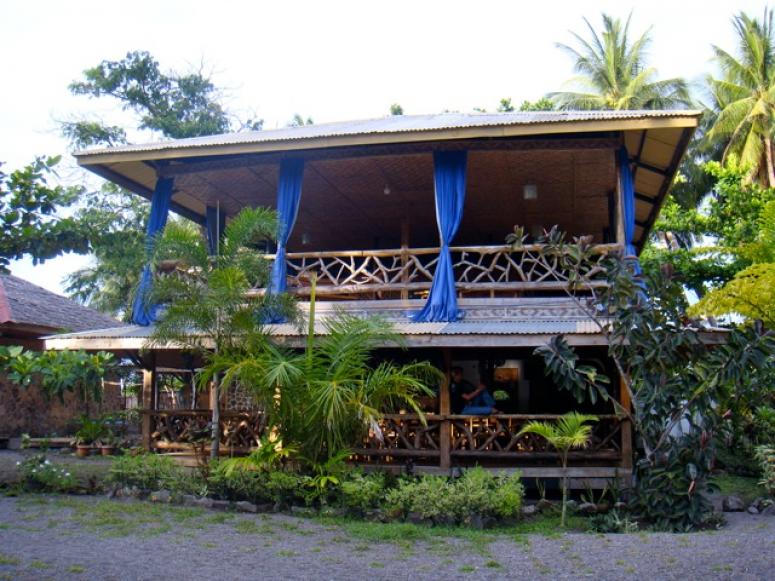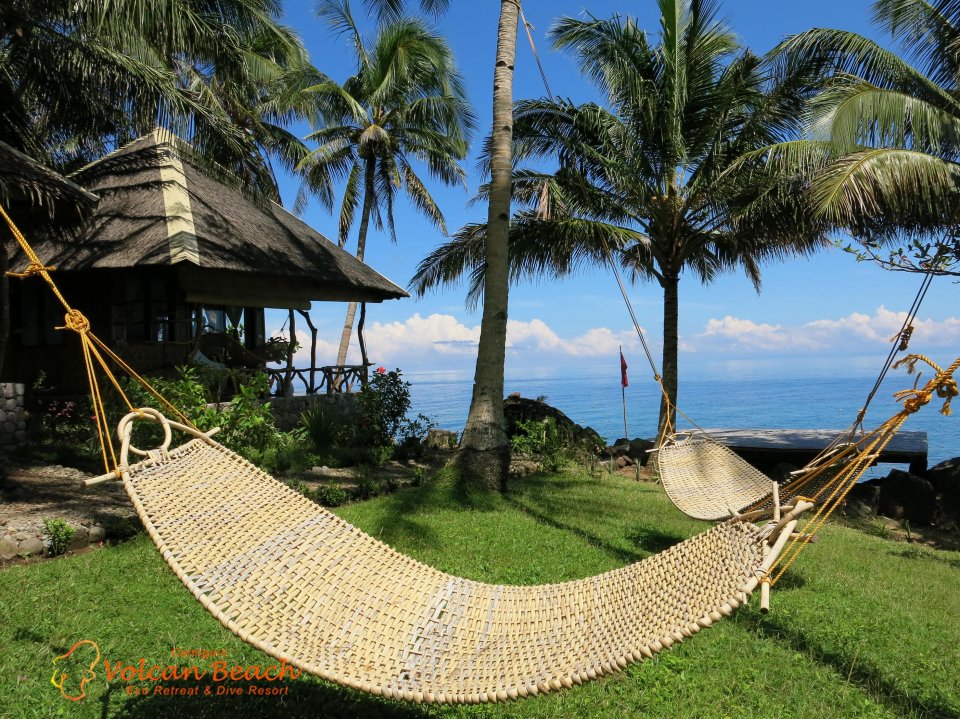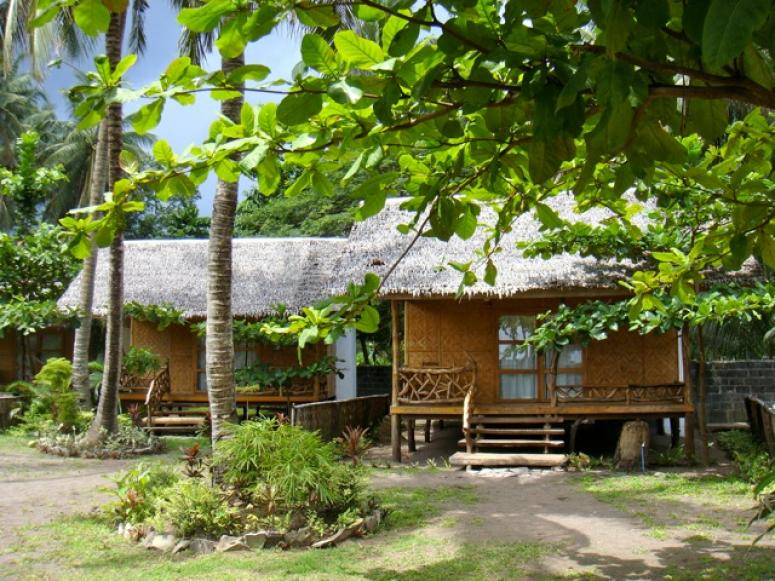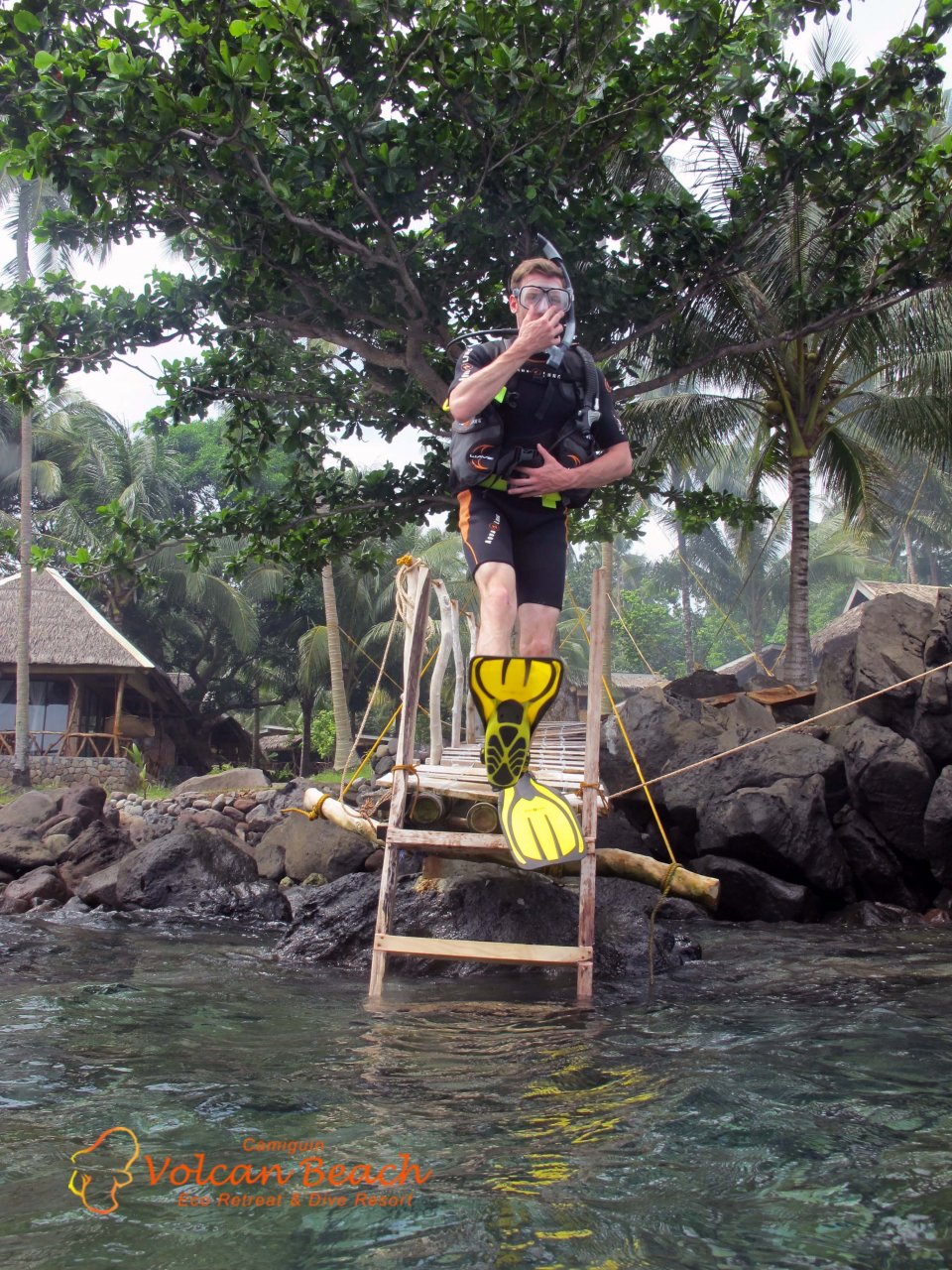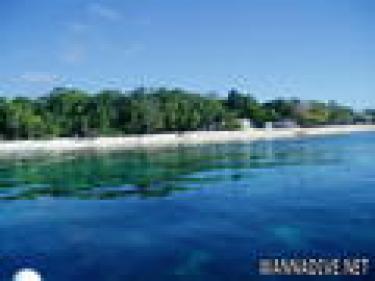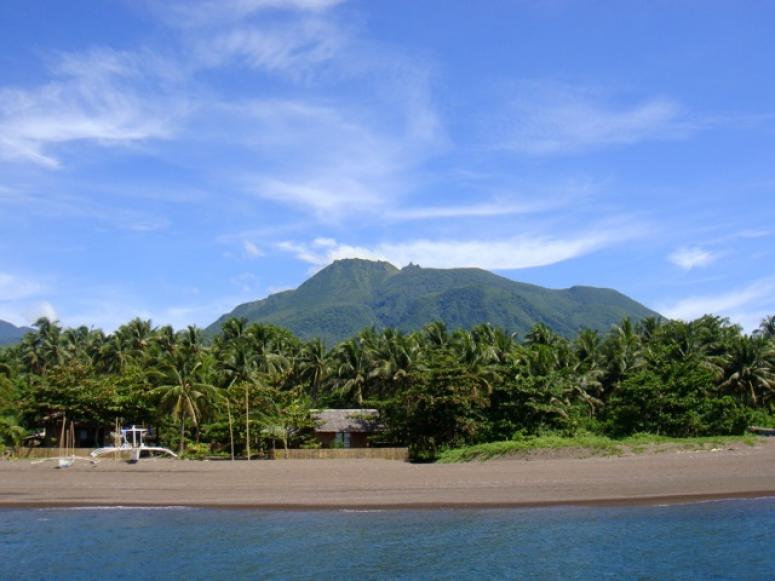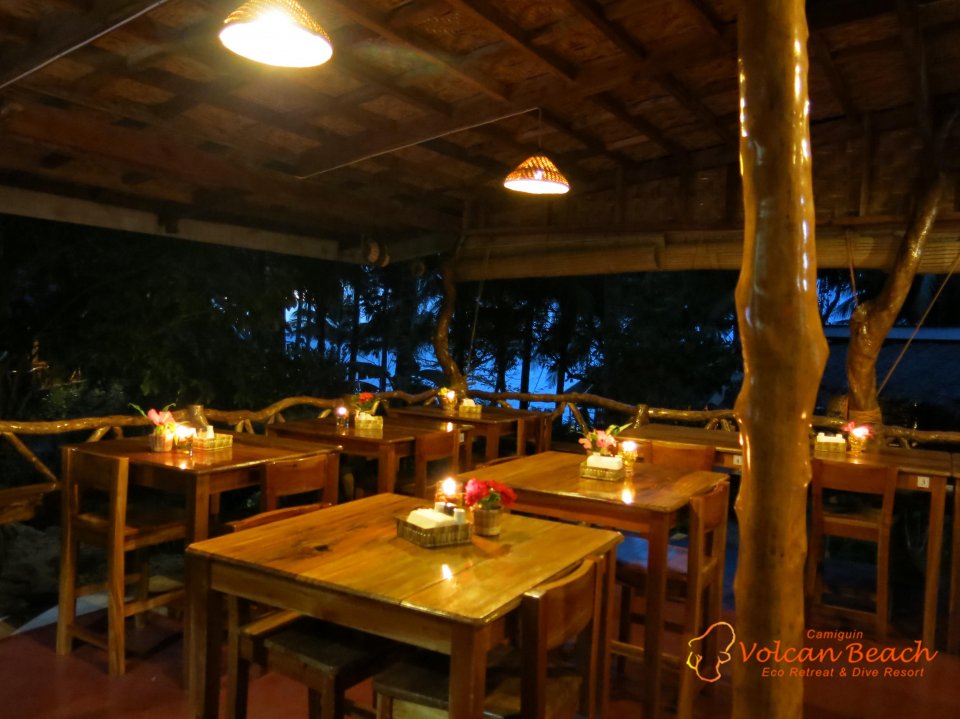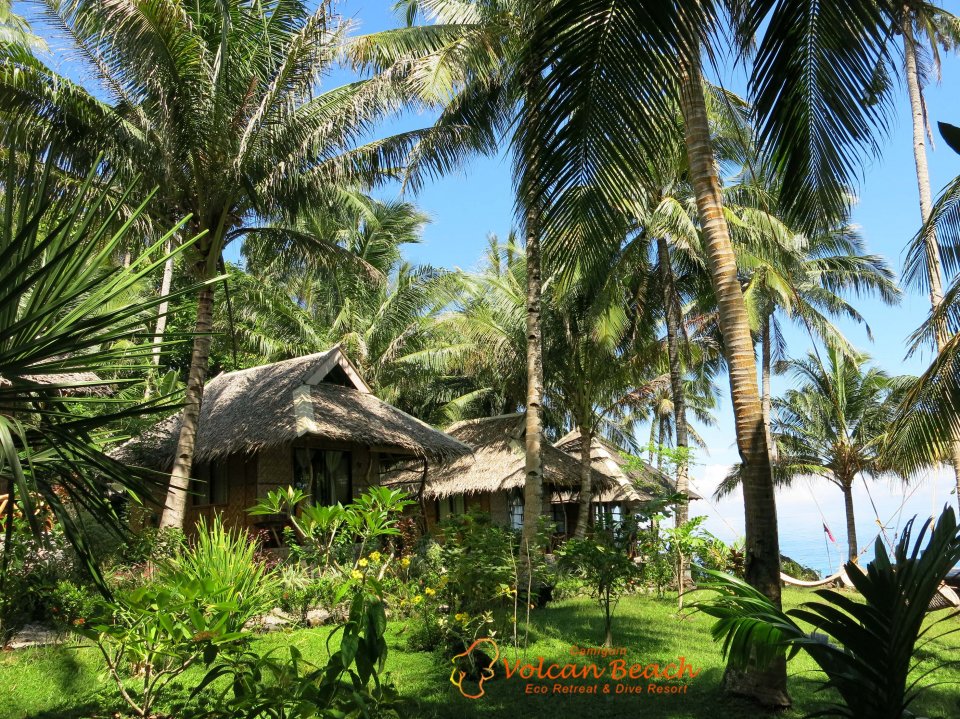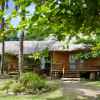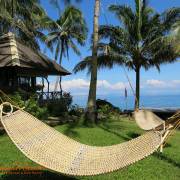Dive in Camiguin
Diving in Camiguin

Nested in the northern Mindanao, Philippines, is a pear-shaped volcanic island of Camiguin, aptly called as the “Island Born of Fire”. It is roughly 100 kilometers north of Cagayan de Oro City in Misamis Oriental.
It can be considered as the Hawaii of the South East Asia as this island was created by volcanic eruptions and land movements. It has a total of seven volcanoes, one of which is the active Mount Hibok-Hibok that last erupted in 1953. Having been blessed by natural wonders and historical treasures, the island is indeed a paradise.
Among the most famous landmarks of Camiguin is an uninhabited White Island that is around two kilometers off the shore of Agoho. It is actually a sandbar that offers a picturesque view of Mt. Hibok-Hibok. This sandbar submerges substantially during high tides, and is an amazing dive spot as it has a coral reef surrounding it. Famous is it's site Black Forest, meaning the black coral forest one can find in the sandy bottom.

Travel to Camiguin

The first major settlement of Camiguin during the Spanish era was Catarman in 1679. This settlement grew and prospered to what is now known as Bonbon. The 1871 eruption of Mt. Vulcan Daan destroyed those towns, the remains of which are the ancient Spanish church and convent in the present town center of Catarman. Sagay was formally established as a town in 1848; Mambajao in 1885 and Mahinog in 1860.
The name “Camiguin “ is derived from the word “Kamagong,” the name of a tree in the ebony family. Original inhabitants of the island were the Manobos from Surigao.
